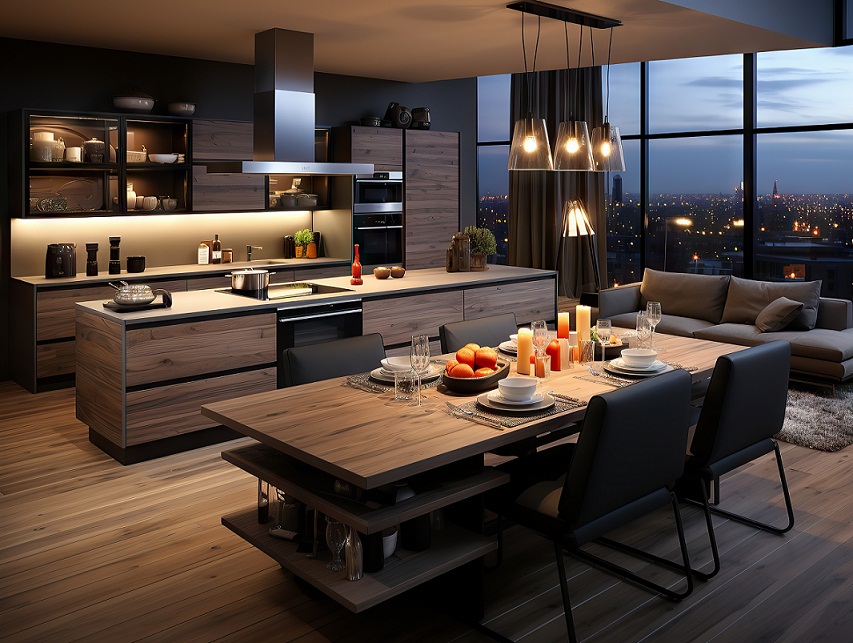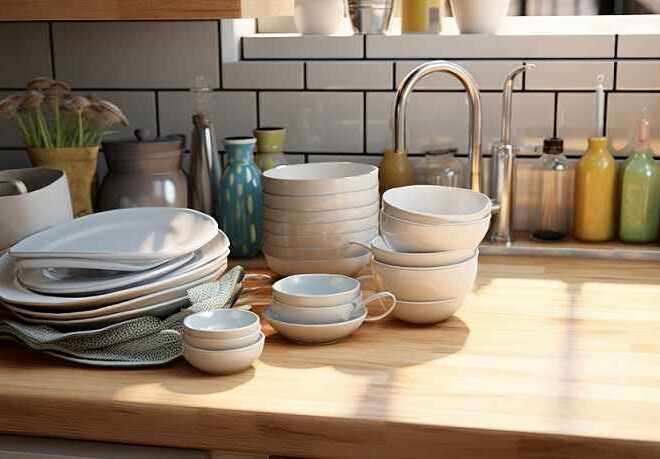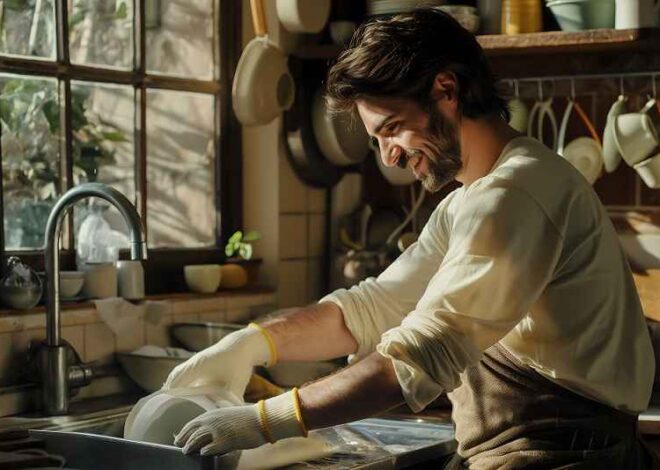
How to Design a Kitchen for Entertaining
Kitchen design plays a crucial role when it comes to entertaining guests in your home. The layout, appliances, finishes, and overall aesthetic should all be optimized to accommodate hosting parties, dinner gatherings, and other events. With the right design considerations, your kitchen can be transformed into a highly functional and inviting space for you to cook, socialize, and connect with loved ones. In this blog post, we’ll explore the key elements of designing a kitchen tailored specifically for entertaining. The focus keyword we’ll cover is “Kitchen Design.”
We’ll look at how to understand your unique entertaining needs and preferences, optimize the kitchen layout for hosting, incorporate seating and social spaces, select the right appliances, enhance aesthetic appeal, and address important practical considerations. Whether you host formal dinner parties or casual family gatherings, this guide will provide tips and ideas for creating a kitchen that meets your entertaining requirements. Let’s dive in!
Understanding Your Entertaining Needs
The first step is assessing how you like to entertain guests and determining the activities and events your kitchen design needs to accommodate. Here are some key factors to consider:
Your Entertaining Style
What’s your entertaining style? Do you prefer formal, seated dinner parties or casual buffet-style gatherings? This will impact the features you’ll want to incorporate. Formal affairs may require more dedicated storage for china and glassware, while casual events demand durable, family-friendly surfaces.
Frequency and Size
How often do you host get-togethers and approximately how many guests attend? If you entertain large groups frequently, you’ll need more high-capacity appliances, abundant counter space for food prep, and open floor plans. For smaller gatherings, you likely don’t need as robust of a system.
Types of Meals and Activities
What types of meals and activities typically take place during your events? Do you need cooking stations for demonstrations or buffets? Areas for mingling over cocktails? Spaces to play games or watch sports? Catering to specific needs will optimize the functionality.
Existing Layout and Pain Points
Assess your current kitchen layout. Are there enough entry points? Does the work triangle allow you to cook, prep, and clean efficiently? Identify any pain points to understand what needs to change to better suit entertaining.
Optimizing Kitchen Layout for Entertaining
Optimizing the kitchen layout is vital for hosting guests seamlessly. Two key elements to focus on are the work triangle and creating an open, connected space.
The Work Triangle
The work triangle refers to the optimal workflow relationship between the sink, stove, and refrigerator. These zones should form a triangle shape, with each area ideally no more than 4-9 feet apart. This allows you to move effortlessly between cooking, washing, and retrieving ingredients.
When designing for entertaining, ensure these appliances are situated to accommodate multiple cooks. Allow ample clearance around appliances and entry points into the work triangle so traffic jams don’t occur.
Open Concept Kitchens
An open-concept kitchen connected to the living and dining rooms fosters seamless hosting. Guests can naturally flow between spaces and you can entertain while cooking. Strategically place islands and counters to delineate the kitchen from other areas without totally separating it.
Be mindful of sightlines when positioning appliances and sinks. Face the messy work zones away from guests and highlight visually appealing areas like a decorative range hood.
Seating and Socializing Spaces
Incorporating seating into your kitchen design encourages guests to gather and socialize while you cook. Here are some ideas:
Islands and Breakfast Bars
A kitchen island or breakfast bar with seating creates a natural spot for people to congregate. Opt for counter-height or bar-height seating.
Banquettes
Built-in banquettes are great for large families or groups. Position them along the perimeter for comfortable seating without disrupting workflow.
Nooks and Lounges
Define separate nooks or sitting areas with built-in benches, comfy chairs, or an upholstered banquette. Place near windows or next to the fireplace for an intimate lounge.
Storage and Organization
Proper storage and organization ensure you can easily access everything needed for entertaining.
Dedicated Storage
Have dedicated spaces for serving platters, barware, table linens, and other party essentials. Install pull-out shelves, trays, or a butler’s pantry for organized storage.
Easy-Access Items
Keep frequently used items within arm’s reach. Place everyday glassware and dishes in base cabinets and drawers near the dishwasher and sink.
Hidden Appliances
Conceal small appliances like stand mixers inside closed cabinets with electrical outlets when not in use. Free up counter space with slide-out shelves.
Selecting Appliances for Entertaining
Outfit your kitchen with high-performance appliances designed to handle the demands of entertaining.
Cooking Appliances
Opt for a professional-grade range with multiple powerful burners and a double oven. This allows you to cook multiple dishes simultaneously. Warming drawers keep completed dishes at the perfect temperature.
Refrigeration
Invest in a large, built-in refrigerator with bottom freezer drawers. This provides abundant storage for party ingredients, beverages, and ice. For serious entertainers, incorporate an additional undercounter beverage fridge.
Dishwashing
A commercial-grade dishwasher with a sanitize cycle is ideal for heavy usage. Choose a model with an adjustable upper rack to accommodate oversized platters. Drawer dishwashers are great supplementary units, especially helpful during clean-up.
Enhancing the Aesthetic Appeal
While functionality is key, you also want your entertaining kitchen to have visual appeal. Use these strategies to make it gorgeous as well as highly functional.
Lighting
Layer ambient, task, and accent lighting for both form and function. Use pendants to spotlight a decorative focal point. Undercabinet lighting illuminates task areas.
Finishes
Select durable and easy-to-clean surfaces like quartz, granite, or solid surface countertops. Add visual interest with brick or tile backsplashes, wood floors, or concrete finishes.
Decor
Incorporate decorative elements like colorful glassware, fresh flowers, artisanal pottery, and textured linens to give your kitchen personality.
Practical Considerations
Don’t forget these important considerations when designing your entertaining kitchen:
Ventilation
A high-powered range hood will properly ventilate the space during large dinner parties. Downdraft systems are great for island cooktops.
Flooring
Choose slip-resistant tile or wood floors that are easy to clean after big gatherings. Floor drains are useful to quickly handle spills.
Electrical and Plumbing
Ensure there are enough outlets and circuits to run multiple appliances at once. Extra sinks and prep areas allow multiple people to help with clean-up.
Conclusion
Optimizing your kitchen design for entertaining requires balancing form and function. By keeping your specific hosting needs in mind and incorporating the right layout, features, and finishes, you can create a kitchen that both looks beautiful and works seamlessly when it’s party time. Use this guide as a starting point, then get creative with ways to make your entertaining kitchen truly unique. Reach out if you need help bringing your vision to life!


